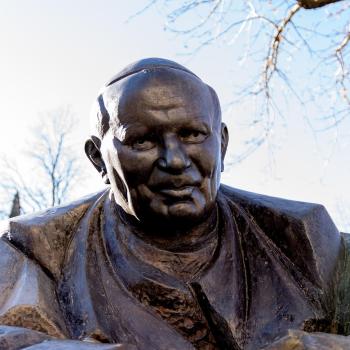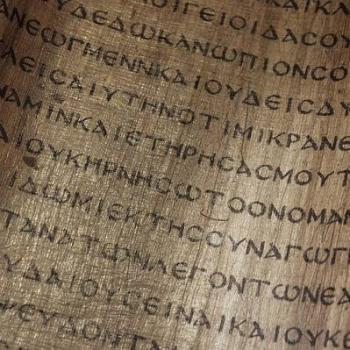THE QUESTION:
Why do images of the Prophet Muhammad so deeply offend Muslims?
THE RELIGION GUY’S ANSWER:
This issue has erupted unexpectedly at Methodist-related Hamline University in Minnesota. Last October, adjunct art teacher Erika Lopez Prater showed an online class two medieval paintings in which pious Muslims had portrayed the Prophet Muhammad receiving Quran revelations from the angel Gabriel.
Lopez Prater warned Muslim students in advance so they could avert thir eyes. Nonetheless, the president of the Muslim Students Association (MSA) complained that Lopez Prater’s “trigger warning” itself showed she had committed an offense against Islam. Hamline’s President Fayneese Miller called Lopez Prater’s deed “Islamophobic” (she later apologized for that word) and the school decided not to renew the teacher’s contract.
The faculty, alarmed over academic freedom, called January 24 for Miller’s resignation in a lopsided 71 – 12 vote of no confidence. Then in response to that response, 13 leaders from campus groups like the MSA, Student Congress, and diversity committee endorsed Miller’s leadership and accused the faculty of betraying students. Meanwhile, Lopez Prater is suing the university for defamation and religious discrimination.
Christiane Gruber, a well-known professor of Islamic art at the University of Michigan, entered the fray to defend and explain her Hamline colleague’s classroom behavior in this online article: https://theconversation.com/islamic-paintings-of-the-prophet-muhammad-are-an-important-piece-of-history-heres-why-art-historians-teach-them-197277/ Whatever current scruples, Gruber said, Muslim artists centuries ago did in fact depict Muhammad and both Muslim and non-Muslim art historians regularly teach about this. Paintings of Muhammad are collected at Istanbul’s renowned Topkapi Palace Library, among other places.
The art depicting Muhammad centuries ago was most common among Shia and Sufi Muslims, not rigorists in the faith’s dominant Sunni branch. Muslim painters in the 14th Century depicted the Prophet’s face, Gruber said, while those in later times piously concealed it with a veil or nimbus of light but showed his body, which is no longer deemed acceptable.
Modern sensitivities burst into the news in a dramatic U.S. terror attack 46 years ago. A dozen gunmen in a Hanafi breakaway from the racialist Nation of Islam occupied a city office building, B’nai B’rith headquarters and the Islamic Center, seized 150 hostages, and paralyzed central Washington, D.C. for 39 hours. Fortunately, there was only one death, of a radio reporter.
The gunmen wanted the city to hand over the prisoners who had slaughtered the Hanafi leader’s children and grandchildren during a sectarian feud. But they had a second demand, that no showings be allowed of the movie “Mohammad, Messenger of God.” Though the film is reverential and evangelistic, and though Muhammad is never seen but only his shadow, and never speaks, the protesters judged it to be sacrilegious. In another well-remembered incident in 2015, terrorists murdered 12 and injured 11 at the Paris office of the satirical Charlie Hebdo magazine, which had not only portrayed Muhammad but in the form of cartoons that subjected him to ridicule.
A very basic belief is at stake here: Islam’s abhorrence of idolatry, which is extended from images of false pagan gods for worship to any images of human beings. This especially applies to Muhammad, both out of respect and to reject any hint that he would ever be seen as an object of idolatrous worship. Muslim culture thus emphasizes abstract decorative arts and calligraphy while avoiding art showing human beings, and especially not just Muhammad but his original Companions and the Prophets revered in the Quran.
The Quran itself certainly warns against idolatrous images but does not address the art issue. The prohibitions are grounded in authoritative Hadith traditions of Muhammad’s teachings, including this: “The most grievously tormented people on the Day of Resurrection would be the painters of pictures. . . All the painters who make pictures would be in the fire of Hell. . . If you have to do it at all, then paint the pictures of trees and lifeless things.”; (Sahih Muslim, 37 / 152)
The Islam Question & Answer Web site (islamqa.info), which represents Sunnis’ strict Salafi tradition, teaches online inquirers that depiction not just of humans but other living things like animals or birds is haram (forbidden under religious law) The ban is extended to dramas as well as movies, and observant Muslims are also directed to shun photography. Muslim authorities have issued such fatwas (formal rulings).
Since Jesus is among the Muslim Prophets honored in the Quran, this means the countless art works depicting him would be haram. That brings us to the curious case of the most expensive art sale in history, the $450 million paid in 2017 for Leonardo da Vinci’s head of Jesus Christ titled “Salvador Mundi” (the Savior of the World).
The purchaser was a prince in Saudi Arabia who is the minister of culture in a nation famed for enforcing Salafi precepts, though that is now moderating somewhat. Mystery surrounds the purchase but there’s speculation it was made on behalf of ruling Crown Prince Mohammed bin Salman and that the monarchy plans to open an art museum with the Jesus painting as its prime feature.













